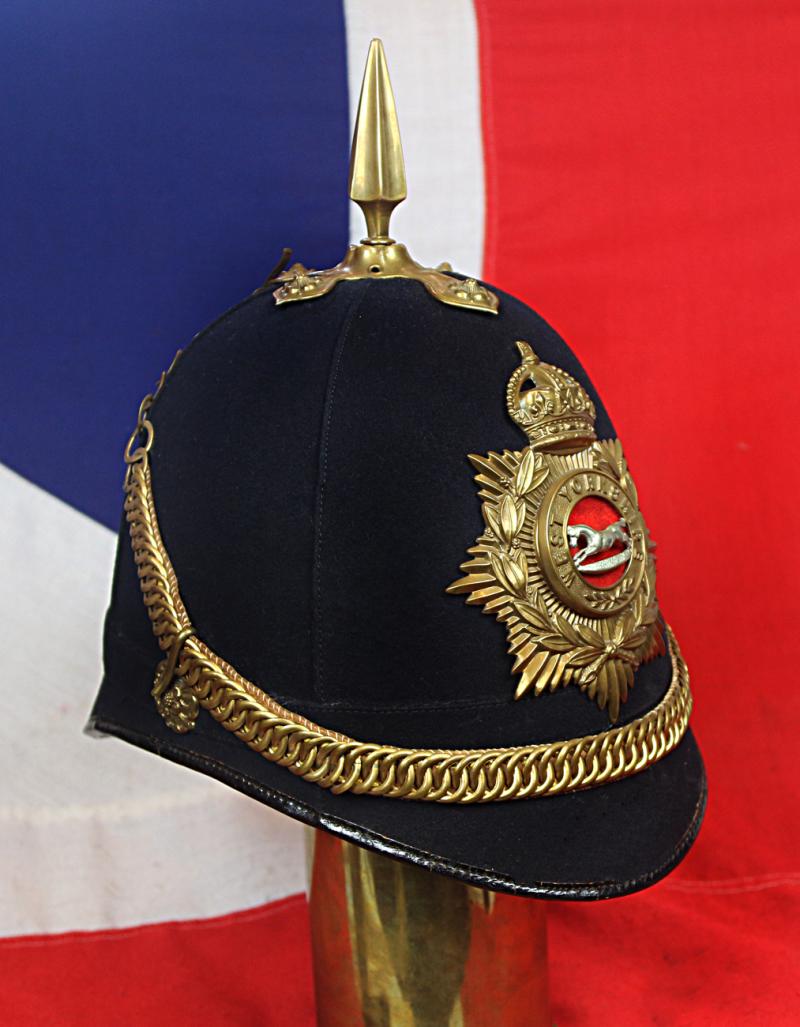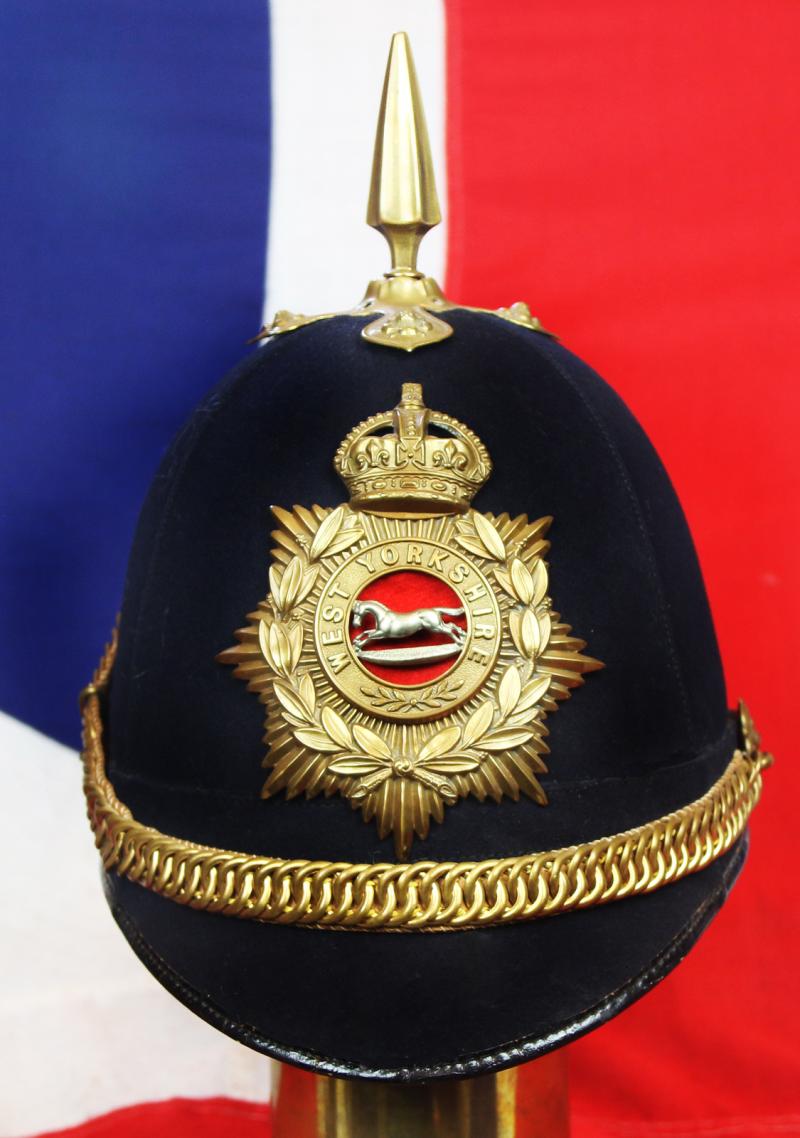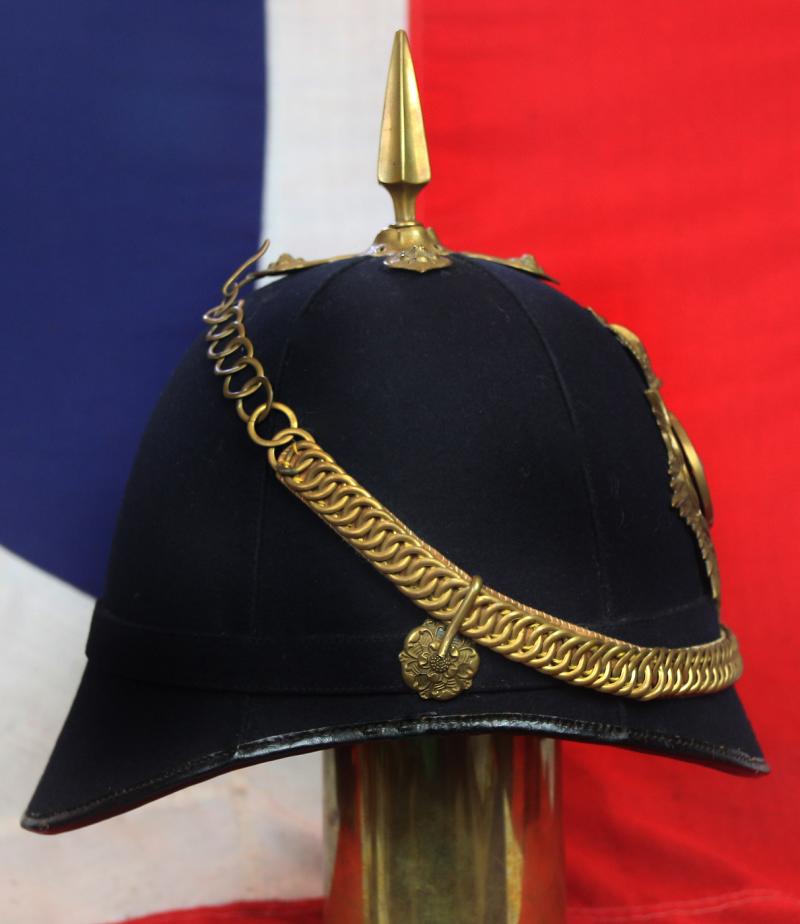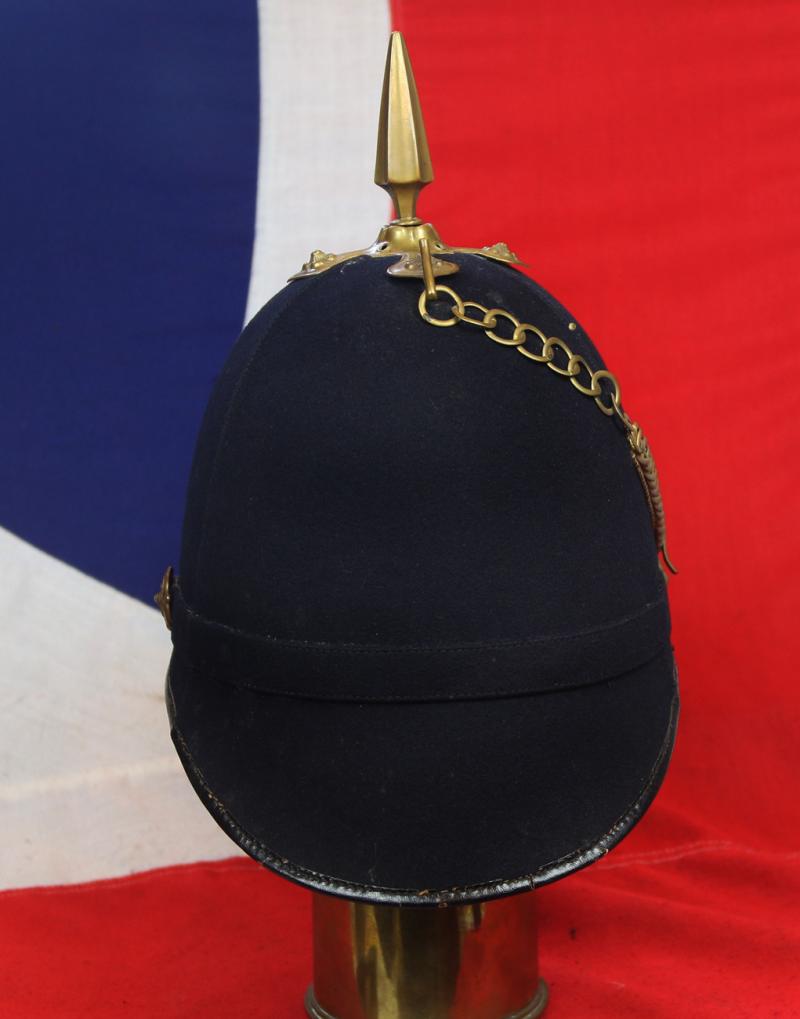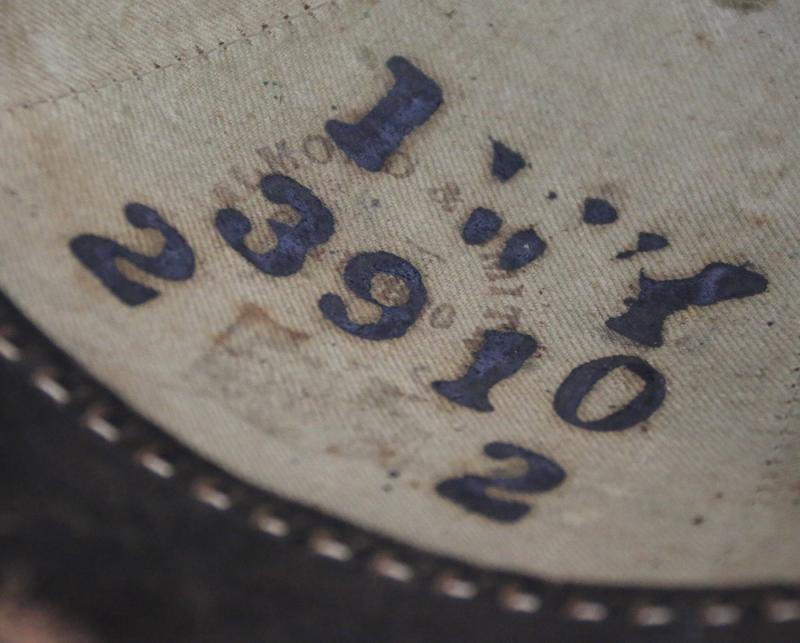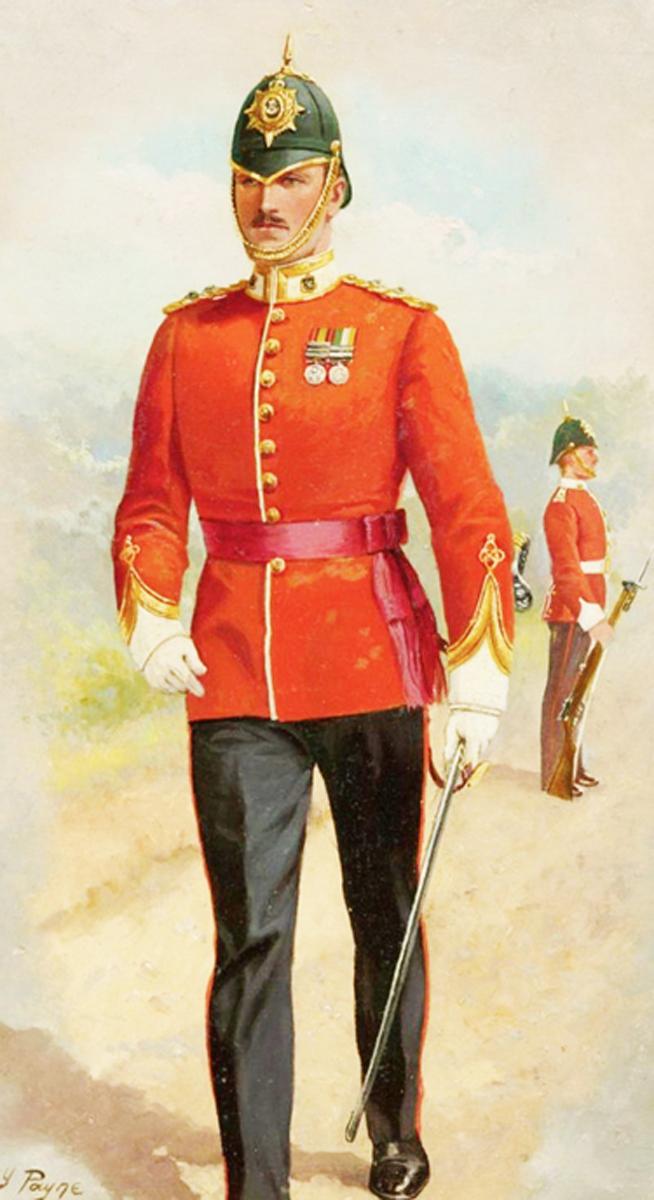A Superb British, Original, Regimental Edwardian Service Helmet. of The West Yorkshire Regiment. Blue Cloth with Gold Badge, Fittings, Spike, & Rose Head Curb Chain Mounts and Chin Chain
In excellent all original condition for age. Blue cloth with all gilt ornamentation, and service issue stamps to the interior.
The British Army’s Home Service Helmet was introduced in 1878. It was of a German influence and would replace a long line of shakos going back to the days of the Peninsular War and Waterloo. In blue cloth, sometimes green, sometime grey, sometimes with a spike, sometimes with a ball, the stiff cork headdress would become a common site on parade grounds throughout Britain for more than thirty years. Most Regular Army regiments and corps took to the helmet, as did their Militia, Volunteer and Territorial counterparts.
With the new headdress came the helmet plate, those highly desirable items of militaria much sought after today by collectors. Large, star-shaped mostly and displaying both ancient and new regimental devices, brightly they shone in their silvers, gilts, gilding and white metals, covering almost the entire front of the headdress as they did so.
The British Army during the Victorian era served through a period of great technological and social change. Queen Victoria ascended the throne in 1837, and died in 1901. Her long reign was marked by the steady expansion and consolidation of the British Empire, rapid industrialisation and the enactment of liberal reforms by both Liberal and Conservative governments within Britain.
The British Army began the period with few differences from the British Army of the Napoleonic Wars that won at Waterloo. There were three main periods of the Army's development during the era. From the end of the Napoleonic Wars to the mid-1850s, the Duke of Wellington and his successors attempted to maintain its organisation and tactics as they had been in 1815, with only minor changes. In 1854, the Crimean War, and the Indian Rebellion of 1857 highlighted the shortcomings of the Army, but entrenched interests prevented major reforms from taking place. From 1868 to 1881, sweeping changes were made by Liberal governments, giving it the broad structure it retained until 1914.
Upon Victoria's death, the Army was still engaged in the Second Boer War, but other than expedients adopted for that war, it was recognisably the army that would enter the First World War. The Industrial Revolution had changed its weapons, transport and equipment, and social changes such as better education had prompted changes to the terms of service and outlook of many soldiers. Nevertheless, it retained many features inherited from the Duke of Wellington's army, and since its prime function was to maintain an empire which covered almost a quarter of the globe, it differed in many ways from the conscripted armies of continental Europe.
It is very curious today that the term ‘privilege’ is a commonplace remark usually made in detrimental terms regarding many that are believed to have automatically benefitted from same by their birth in their National location. Please read below to see just how ‘privileged’ the British regular soldier was in the 19th century { Both of the Lanes Armoury’s partners came from working class families, and all but a very few males were combatants in the armed forces of Britain. One great, great, grandfather died and was buried in South Africa fighting in the Zulu War, and his son died and was buried in South Africa fighting in the Boer War}.
The disciplinary system was not notably more harsh than the contemporary civil Penal System, although soldiers stood less chance of severe penalties being commuted. The death sentence could apply for crimes such as mutiny or striking an officer, but was generally reserved for actions that were capital crimes in common law, such as murder. Minor infractions could be summarily punished with extra duties or stoppages of pay, but flogging remained a punishment for many offences, including minor offences, on the discretion of a court martial. A court martial could be held at regimental level (which might well be influenced by the attitude of the colonel or other senior officers), or district level where convenient, or a General Court Martial might be convened under the authority of the Commander-in-Chief for serious matters or offences involving officers.
The maximum number of strokes inflicted on a soldier sentenced to flogging (which had been a barbaric 2,000 in 1782, essentially a death sentence for nearly any man) was reduced to 300 in 1829, and then to 50 in 1847. Some regiments nevertheless rejoiced in the nicknames of the "bloodybacks" if they were notorious for the number of floggings ordered.
Only a small portion of soldiers were permitted to marry. Soldiers' wives and children shared their barracks, with only blankets slung over a line for privacy. Wives often performed services such as laundry for their husbands' companies or barracks. A particularly cruel feature of the Army's practices was that fewer soldiers' wives were allowed to accompany a unit overseas (one per eight cavalrymen or twelve infantrymen) than were permitted when serving at home. Those wives not chosen by lot to accompany the unit when it embarked were forcibly separated from their husbands, for years or for life.
Soldiers' pay was nominally one shilling per day, but this was decreased by "stoppages" of up to sixpence (half a shilling) for their daily rations, and other stoppages for the issue of replacement clothing, damages, medical services and so on. In 1847, it was laid down that a soldier must receive at least one penny per day, regardless of all stoppages. A privileged life indeed.
Code: 25418
925.00 GBP


